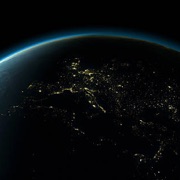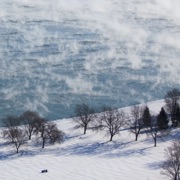AccuWeather meteorologists are available 24/7 to provide further insights and updates on evolving weather conditions. Please contact pr@accuweather.com during regular business hours, or support@accuweather.com or call AccuWeather’s Media Hotline at (814)-235-8710 at any time to arrange interviews with AccuWeather experts or to request the most updated graphics for print or broadcast.
Warm Winter In The Northern Plains Cost Businesses $8 Billion In Estimated Losses
|
|||||||
April 17, 2024
AccuWeather Global Weather Center – April 17, 2024
Record warm temperatures, as well as a lack of snow and ice across much of the northern Plains and upper Midwest this winter, cost businesses and event planners billions of dollars.
AccuWeather’s team of expert meteorologists estimates the total economic damage and loss caused by the unseasonably warm winter weather in the region at around $8 billion.
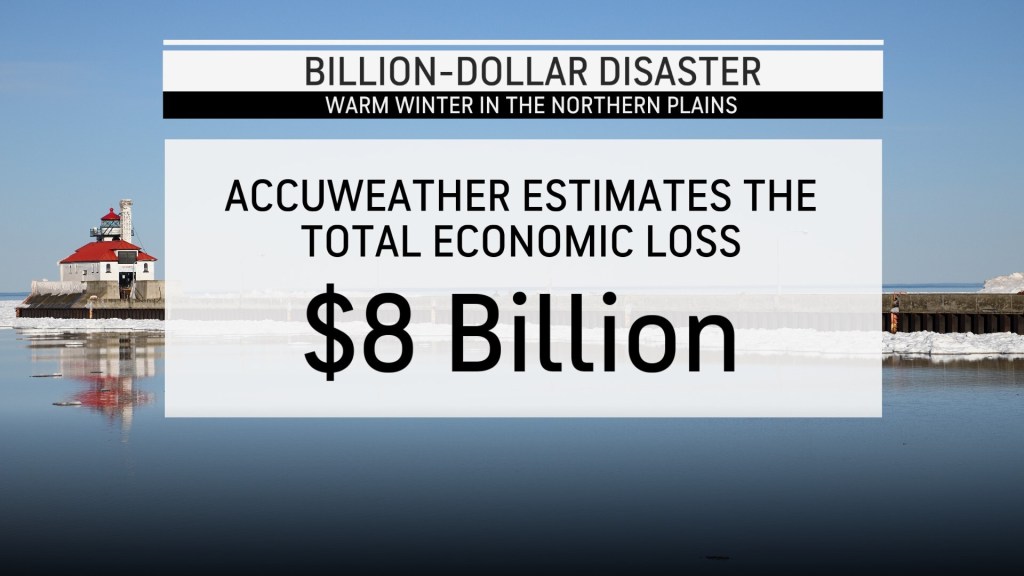
“States from Michigan to Minnesota, North Dakota, and even parts of Illinois and Iowa depend heavily on tourism, especially in the winter months,” said AccuWeather Chief Meteorologist Jon Porter. “The lack of cold, snow, and ice in these areas was a significant hardship, leading to dozens of major outdoor events and traditions being significantly scaled down, or cancelled all together. This took a significant bite out of the economy in this region, with some businesses even shutting down early for the season.”
LACKLUSTER SNOW, LITTLE ICE & LESS FUN
Minnesota experienced its warmest December, January, and February temperatures on record. At least 15 major outdoor events, and countless smaller events, were cancelled due to a lack of ice on the lakes across Minnesota. Temperatures were too warm for events and competitions featuring ice castles, outdoor ice-skating rinks, ice fishing, and ice hockey.
North Dakota, Wisconsin, Michigan, and Iowa also experienced the warmest winter on record.
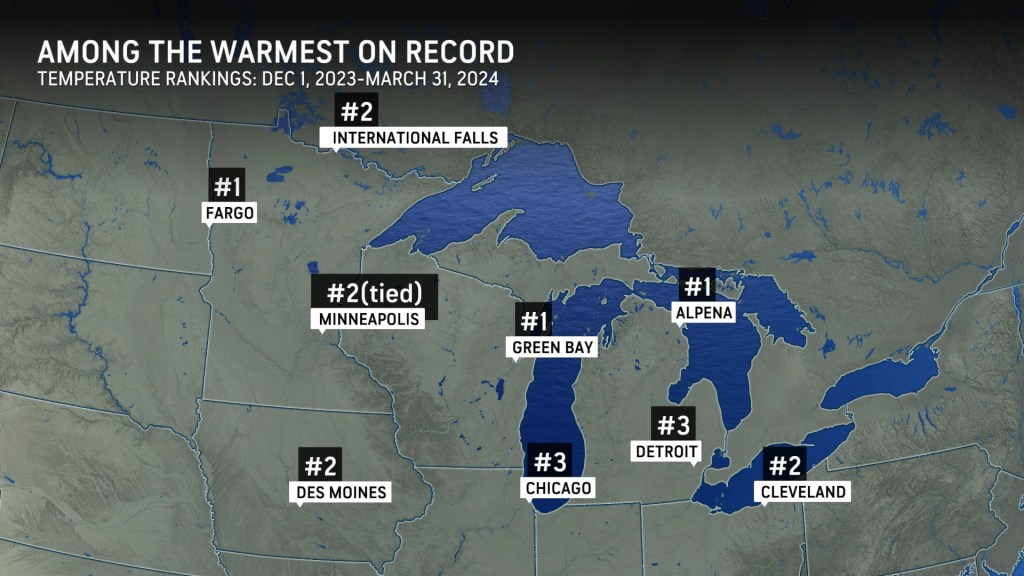
Ice coverage across the Great Lakes reached all-time record low, or near-record low levels this winter.

Less than 15 inches of snow fell in Minneapolis between November and mid-March, compared to a historical average of 46 inches of snow. The city did not record an inch of snow on any given day between Halloween and early February.
More than six inches of snow accumulated in the Twin Cities during a winter storm on Valentine’s Day, and more than 15 inches of snow fell in March. The wintry blasts came too late for most outdoor events and seasonal traditions, which attract tens of thousands of local families and tourists who drive or fly in from hundreds of miles away.
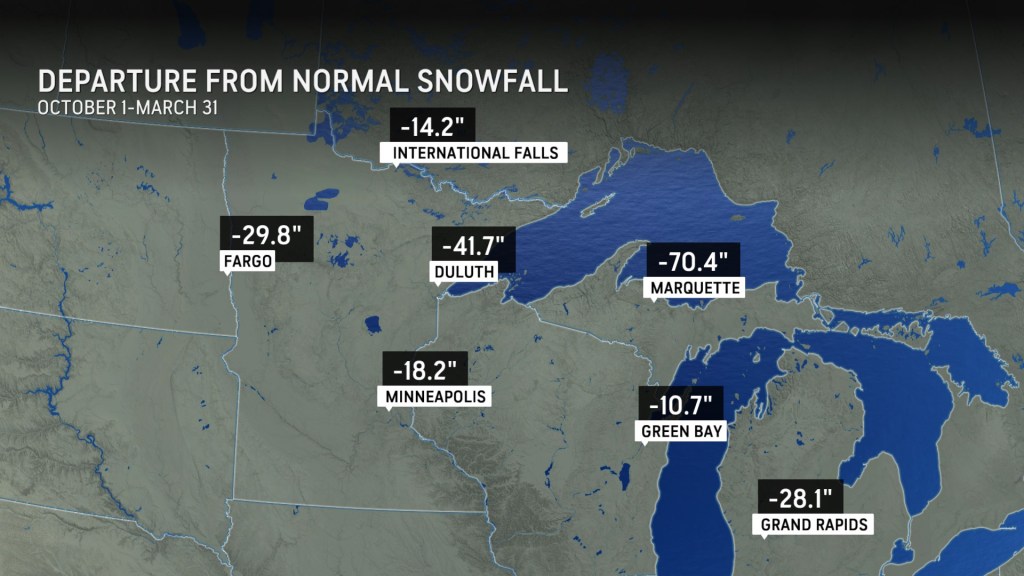
A seasonal total of 29.5 inches of snow fell at the Minneapolis-St. Paul International Airport this winter, roughly 55 percent of the historical average for the season.
“The lack of cold temperatures, snow, and ice this winter has led to a well below-historical average risk of spring flooding along the Upper Mississippi River,” said AccuWeather Senior Meteorologist Alex Sosnowski. “There have been very few issues with ice jams in rivers across much of the northern Plains and upper Midwest. It was simply too warm for substantial amounts of ice to form in many places.”
IMPACT ON BUSINESSES
Families may have saved money on heating costs this winter, but businesses that depend on cold weather and snow lost millions of dollars. Seasonal workers have reportedly been laid off at dozens of resorts, outdoor recreation businesses, and snow removal companies.
The U.S. Small Business Administration said hospitality companies, suppliers, and winter tourism businesses impacted by the record high winter temperatures and lack of snow can apply for economic injury disaster loans, under an ongoing federal drought declaration in dozens of counties across Wisconsin, Michigan, and Minnesota.
“From skiing and snowshoeing to winter festivals, snowy winters are part of our way of life in Minnesota. The low precipitation we’ve experienced this winter has had a real economic impact on small businesses that rely on snow and winter tourism to grow and thrive,” said Minnesota Governor Tim Walz in a statement. “I encourage all impacted business owners to apply for assistance as soon as possible.”
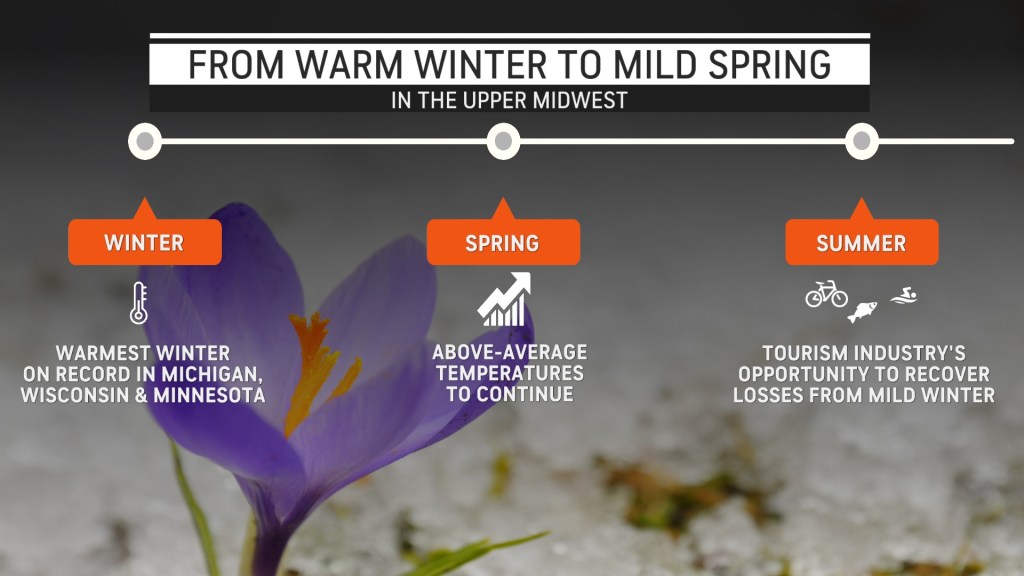
“Anyone who’s spent time in Wisconsin knows that the cold and snow are essential to our economy, especially in our northern communities,” said U.S. Senator Tammy Baldwin in a statement. “This year’s lack of snowfall has been a major blow to many of our Wisconsin businesses.”
AccuWeather’s economic loss estimate incorporates independent methods to evaluate direct and indirect impacts of the weather, includes both insured and uninsured losses, and is based on a variety of sources, statistics, and unique techniques AccuWeather uses to estimate impact and loss to various parts of the economy. It also includes the long-term effect on business logistics, transportation, and tourism, as well as the other expenses of yet unreported impacts.
To put this event into context, AccuWeather experts estimated the total damage and economic loss from flooding, washouts, and mudslides from Hurricane Hilary in California and the Southwest U.S. last February at $9 billion to $11 billion. AccuWeather estimated the damage and economic loss from Hurricane Idalia in August 2023 to be $18 billion to $20 billion. The wildfire in Hawaii last August had an estimated damage and economic loss totaling $14 billion to $16 billion. AccuWeather experts estimate Hurricane Nicole caused $5 billion to $7 billion in damage and economic losses in November of 2022.
CLIMATE CONNECTION
Winter temperatures in the northern Plains and upper Midwest have warmed an average of 4 degrees to 5 degrees Fahrenheit since the start of the 20thcentury.
AccuWeather Senior Meteorologist Brett Anderson says the winter warming trend in this region is higher than any other area in the lower 48 states.
“On average, there has been a five-to-20-day reduction in the number of ‘extreme cold days’ in the upper Midwest and northern Plains, compared to historic average back in the late 1940’s,” said Anderson. “The snow-to-precipitation ratio in this region has also decreased slightly. The gap between storms with all snow, compared to storms with rain, sleet, ice, or a wintry mix with snow, has narrowed by about five percent.”
Anderson described the change of annual snowfall in the region since 1930 as a “mixed bag”.
“Some areas are experiencing less snowfall, others are seeing more. The main reason is winters are getting wetter in this region. It is still cold enough in northern areas, most of the time, to see snow instead of rain or a wintry mix,” said Anderson. “By the end of the century, more areas could see a decrease in annual snowfall as winter temperatures continue to rise.”
Anderson says the United States experienced a strong El Niño this past winter. El Niño winters typically result in less snowfall in the northern Plains and upper Midwest, compared to the historical average, because the pattern often results in a primary storm track that bypasses the region.
“The combination of a strong El Niño and climate change has clearly played a role in the lack of cold temperatures across much of the northern Plains and upper Midwest this winter. In terms of a lack of snow, El Niño appears to be the key factor to blame,” said Anderson.
EARLY SIGNS OF A COLDER, SNOWIER SEASON NEXT WINTER?
After a challenging winter that hit businesses, outdoor event planners, and the tourism industry hard, AccuWeather experts say there are early indications of a colder winter on the horizon.
“There is a growing likelihood that we switch to a La Niña pattern by this coming fall or winter. If that happens, colder temperatures and snowier conditions could return to the northern Plains and upper Midwest,” explained Anderson. “More ice could return to the Great Lakes as well, after a winter with record-low ice coverage.”
Additional AccuWeather Resources:


